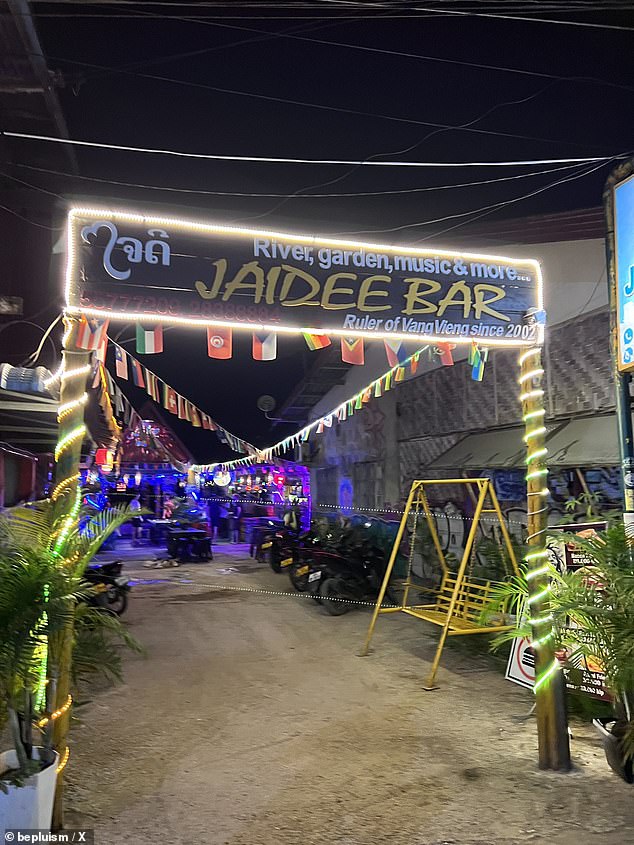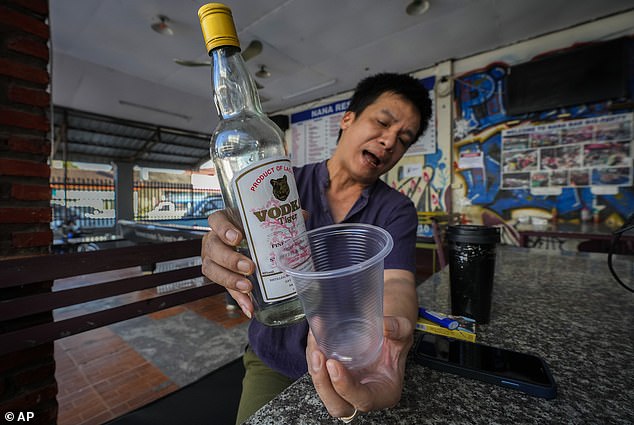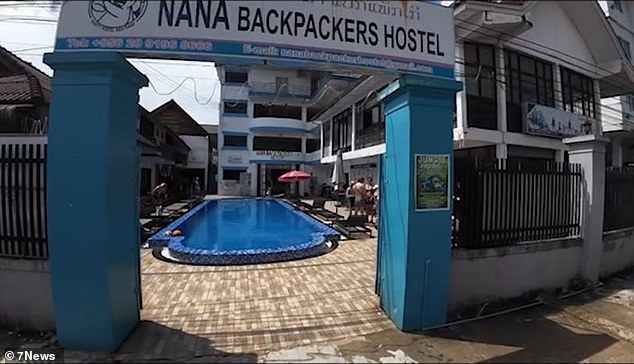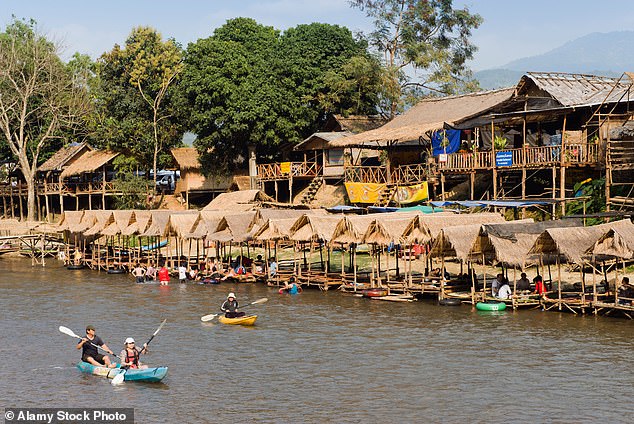For decades it was seen as Thailand’s smaller, quieter and safer neighbor.
But Laos has become increasingly popular with tourists, including Western backpackers, and that popularity has come at a price.
Some of its largest cities, once famous for their temples and processions of Buddhist monks, are now firmly established on the backpacker route, but are also experiencing record levels of crime and drug-related violence.
Vang Vieng, in particular, has become known as a gap year party town for teens and twenty-somethings seeking hedonism and adrenaline sports.
The former farming village is now at the center of an investigation after five travelers died after drinking drinks believed to have been laced with methanol, a cheaper form of alcohol that can cause severe poisoning or death.
It is Vang Vieng’s second test of notoriety. The city had already made global headlines in 2011 for the deaths of tourists while tubing, traveling in an inflated tractor inner tube down the Nam Song River.
Ramshackle bars sprang up along the banks of the river, each competing to attract backpackers with free shots of the local Lao-Lao rice whiskey.
Enterprising bar owners set up rope swings, makeshift zip lines and rickety water slides for gap year revelers to play on and threw ropes to ‘tubers’ so they could toss them for ‘happy’ drinks or shakes laced with hallucinogens.
Tourists kayaking in the party town of Vang Vieng in Laos, where five people have died from suspected methanol poisoning.

Methanol poisoning victims Bianca Jones (left), who sadly passed away, and her friend Holly Bowles (right), who is fighting for her life in hospital, were seen at Jaidee’s Bar in Vang Vieng just hours before being transported urgently to the hospital.

Bianca Jones, 19, from Melbourne, sadly died after consuming suspected “methanol” drinks in Vang Vieng, Laos.
The combination of cheap alcohol, party atmosphere and river games proved very popular on the so-called Banana Pancake Trail, a well-traveled path through Southeast Asia for budget travelers.
The Lonely Planet guide described tubing as “one of the rites of passage on the Indochina backpacking circuit.”
Vang Vieng, a four-hour bus ride from Vientiane, the capital of Laos, became so popular that at one point backpackers outnumbered locals by three to one.
But reports soon began to emerge of travelers dying, either by drowning or drinking, or by jumping from bars into the river and smashing their skulls on rocks.
Laos is a one-party communist state and strict controls on the media meant deaths often went unreported.
But authorities finally launched a crackdown in 2011, after 27 tourists died in Vang Vieng in a single year.
British tourist Benjamin Light, 23, from Bournemouth, drowned after jumping into the river from a swing during a tubing trip.
According to their research, participants were given alcohol during several stops on their way down the river.

WhatsApp messages have since revealed the couple left the hostel and traveled 950 meters to the beachfront bar.

Ms Bowles (pictured) was on holiday with her school friend in the popular backpacking destination of Vang Vieng.

Simone White, 28, from Orpington, Kent, is the fifth tourist to die after falling ill last week.
Light is said to have remained underwater “for some time” before crawling back to the river’s edge.
He managed to get up but immediately fell back and his eyes rolled back in his head and he could not be revived. A coroner recorded a verdict of accidental death.
Former Slough pub owner Michael O’Sullivan, 39, died on his honeymoon in 2009 during a tubing trip with his new girlfriend Ilana in Vang Vieng.
Travel expert Gwen Engler, who runs the blog Thefullpassport.com, said she was shocked by a visit to Vang Vieng in 2011.
She said: ‘Loud, rowdy, scantily clad people flooded the city, many of them struggling to keep their balance and/or upright.
‘Waiting to embrace them were streets full of noisy bars and restaurants offering cheap drinks; ‘Happy’ menus filled with marijuana, magic mushrooms and opium in a variety of forms.’
He continued: “It seemed like the sole purpose of being there was to be destroyed as quickly and efficiently as possible… The entire city seemed to have evolved to serve the hedonistic pleasures of hordes of tourists, flying alarmingly in the face of social values and customs. of this conservative and communist country.’
Following the 2011 crackdown, riverside bars were closed, drugs were removed from the menus of “happy” cafes and strict controls were imposed on tubing operators.
Tourists were encouraged to visit the region’s impressive limestone karsts, caves and waterfalls rather than its bars, and strict limits were imposed on the number of tubes.
The crackdown was hailed as a success and record numbers of tourists continued to visit, without the lure of 24-hour partying and tubing.
But Laos remains one of the poorest nations in Southeast Asia, and alcohol and drugs are cheap, especially by Western standards.
Traffickers are using the country as a corridor to their wealthier neighbors and have flooded it with methamphetamine, with pills selling for as little as 20p.
Crime levels have also skyrocketed, as have attacks on tourists, and visitors report muggings and armed robberies.
Overall, crime rates increased by 28 percent in 2022, with drug-related crimes accounting for nearly two-thirds of all cases.
Possession and use of drugs can carry the death penalty.

Hostel manager and bartender Duong Duc Toan (pictured) claimed it wasn’t his Tiger Vodka that made the girls sick.

Staff at Nana Backpackers Hostel have been questioned by police, who demanded to see bottles of liquor served on the night of the poisoning.
Laos experienced a wave of civil unrest in 2022 and 2023, during an economic crisis. This type of unrest is rare in the country, where protests and demonstrations are illegal.
Another hidden danger dates back to the Vietnam War, when the United States used air bases in Laos, including Vang Vieng, and bombed suspected supply lines in the south.
Cluster bombs and unexploded landmines remain in some areas, although tourist regions are said to be safe.
The Ministry of Foreign Affairs’ travel advice for the country is to avoid the central province of Xaisomboun, following armed clashes with anti-government groups.
It warns that male and female tourists have reported that their food or drinks are contaminated with drugs, and that travelers should be careful about accepting spirit-based drinks after recent methanol poisonings.

